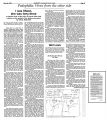One of our staff members is contributing considerably to a News Archiving service at Mu. Any well educated (Masters, PhD or above) users who wish to make comments on news sites, please contact Jim Burton directly rather than using this list, and we can work on maximising view count.
Intergenerational Lesbianism
 | |||||||
| Part of NewgonWiki's series on minor-attracted identities | |||||||
|---|---|---|---|---|---|---|---|
|
| |||||||
| Starting Guide | Community | Pediverse MAP | NOMAP | AAM | Neologisms "MAP" Origins | Flag | Movement Political history: MAP & LGBT Alliances Philias: Ephebo - Hebe - Pedo - Nepio Gender and attraction: BL - EL - GL Pederasty/Gay BL | Korephilia/Lesbian GL Pro-c | Neutral-c | Anti-c BLogo | GLogo | |||||||
|
| |||||||
| Category: Minor-attracted people | |||||||
| Template:MAI - This template |
Intergenerational Lesbianism, sometimes called Korephilia[1] is an age-gap relationship (similar to pederasty), but between a woman and a younger female / girl. The word korephilia comes from the Greek words κόρη kórē meaning "girl" and φιλία philíā meaning "love". Many women experience romance as a maternal feeling, and often express that love through nurturing and caring for the loved girl. Couples may look like mother and daughter, perhaps sharing a maternal bond mixed with romantic and/or sexual feelings.
Etymology and History
The word korephilia comes from the Greek words κόρη kórē meaning "girl" and φιλία philíā meaning "love". The word lesbian itself is an allusion to Sappho, originating from the name of the island of Lesbos, where she was born. Sappho was a teacher and priestess of Aphrodite, the goddess of love and sexual passion, and was said to have had consensual sexual contact with her female adolescent students.[2] Writing for NAMBLA, Linda Frankel explained, "How do we know how the girls felt about it? Sappho quotes her student Atthis as saying:
Sappho, if you will not get up
and let us look at you
I shall never love you again
Get up, unleash your suppleness
lift off your Chian nightdress[3]
[...] One does not berate one's teacher for refusing to get undressed unless one happens to like looking at her naked."[4] Frankel argued that "Sexual relationships between student and teacher that involved mutual consent were actually considered in a positive light. Learning intimacy from an experienced adult was considered beneficial for the young and a significant part of their education. [...] If the lesbian community of today were aware that their foremother, Sappho, was a lover of girls, they might not be so quick to condemn NAMBLA". She ends with Sappho's blessing:
The gods bless you
May you sleep then
On some tender
girl friend's breast.[5]
Korephilia in Modern and Feminist literature
There have been recent depictions of Intergenerational Lesbianism in popular culture. "The Little Coochie Snorcher That Could" from "The Vagina Monologues," recounts the experience of a thirteen year old girl's relationship with an older woman. The 2013 film Blue Is the Warmest Colour, depicts the friendship between a 15 year old girl and an adult woman that becomes erotic.
Well-known examples in English-speaking literature come from the gay world, including the influential Canadian gay liberation activist and Body Politic writer Chris Bearchell,[6] lesbian feminist activist Prof. Beth Kelly,[7] and nationally honored / decorated lesbian writer |Jane Rule CM OBC.[8] It should be noted, however, that these examples emerge from the 1970s spirit of sexual revolution. Before the sexual revolution, Lesbianism was often pathologized, outright denied, thought of as deviant or a 'phase'. Until very recently, Lesbianism was subject to a conspiracy of silence, to the extent that feminist icon Betty Freidan famously dubbed them the 'lavender menace', and at-one-time believed lesbians to be part of a plot to bring the (heterosexual) feminist movement into disrepute.[9] It is therefore difficult to find clear evidence of positive and consensual lesbian sexual contact before the sexual revolution, with sexual contact that transgresses age of consent laws / age-gap norms being especially sensitive and stigmatized after the late 1970s and early 80s, forced underground into secrecy.
In previous literature, writers such as feminist activist Kate Millett interpreted aversion to intergenerational eroticism as a product of women being subjects of historical patriarchy. Millett contrasted the more prevalent discussion and even defense of mutually willing intergenerational eroticism within the male-gay movement (see LGBT-MAP Unity), with the aversion many women and lesbians espoused. Millett wrote that women are "more sexually repressed than men, having been given a much more puritanical code of behavior than men ever have"[10]. Unlike men who had the history of pederasty to draw on, "It’s possible," Millett explained, "that the condition of lesbians has been so repressive that it prevents them from seeing people below the age of consent as sexual partners" (Ibid).
German Psychologist Marina Knopf (1994, cited below) attempted to solicit interviews from females who had experienced intergenerational lesbianism. Knopf received letters but all respondents except one refused to be interviewed. Knopf argued that the age taboo, or what she terms the "paedosexual taboo" might be "felt so strongly by women precisely because the opportunities for breaking it lie so close at hand. Because of their special closeness [to young people], for women the paedosexual attraction, as well as the taboo, could be greater than for men" (p. 19). Knopf detected a greater sense of guilt and fear of arrest among females, and Berlin's female intergenerational rights organization ("Kanalratten" meaning "Sewer Rats"), which had published a manifesto,[10] were too inhibited to meet Knopf after agreeing to be interviewed by her. Taken together, the evidence suggests that intergenerational lesbianism has been far more underground and secretive than its male homosexual counterpart. In the case of German Politician Dagmar Döring, for example, written in 1980 when she was 19, she wrote of an experience where, "no man and no woman, rather a child, in particular a girl," could satisfy her needs. Döring said she was afraid of the law which punished the "love between adults and children", and said she wanted "to do everything to change such laws." After the 1980s backlash era of moral panic, however, she later distanced herself from these comments.[11]
Despite a conspiracy of silence around Lesbianism until the sexual revolution, we have documented many positive age-gap testimonies. In 2020, historian Amanda H. Littauer (cited below) published a seminal scholarly article - Queer Girls and Intergenerational Lesbian Sexuality in the 1970s - which provides testimonies from archival research. We hope more investigations like Littauer's will continue to uncover and publish evidence of this largely underground world. As pioneer queer activist, Pat [now Patrick] Califia, wrote:
I know very few lesbians, and even fewer gay men, who waited until they were eighteen to come out. Most of us were aware well before puberty that we wanted to be close to or sexual with members of our own sex. I've heard countless stories from women about their attempts to seduce their high school gym teachers or camp counselors. Not all of these attempts were unsuccessful. Our real-life experiences do not jibe with our politics on this issue."[12]
Gallery
-
The K/Heart. A symbol proposed by Katie Cruz to represent Korephilia. [13]
-
Lesbian MAP Flag (commonly cited but rarely used symbol)
-
The Kanalratten Manifesto - Via bk-girls.org, originally printed in 1989.
-
Chris Bearchell, "I Was Fifteen, She Was Forty-Three...". The Body Politic, May 1978. Reprint from Anarchy: A Journal of Desire Armed.
-
Lesbian Feminist Jane Rule writes in The Body Politic.
Research literature
- Amanda H. Littauer, Queer Girls and Intergenerational Lesbian Sexuality in the 1970s[14], in Historical Reflections, 46:1 (2020), 95-108.
- Martha Vicinus, "The Adolescent Boy: Fin De Siècle Femme Fatale?", in Journal of the History of Sexuality 5:1 (1994), 90–114.[15]
- Marina Knopf, "Sexual Contacts Between Women and Children", in Paidika, Vol. 3, No.3 (1994).[16]
- Paidika, Vol. 2, No. 4 (1992): Special Women's Issue.[17]
- Martha Vicinus, Interview in Paidika, Vol. 2, No. 4 (1992): Special Women's Issue.[18]
- Judith Gay, "Mummies and Babies" and Friends and Lovers in Lesotho’ (1986).[19]
- Dr. Arne Frederiksen, 'Female Paedophilia', in Crime without victims: A book about paedophilia (1983, translated to English by Dr. Edward Brongersma in 1993, with an introduction by Dr. Preben Hertoft.
- Marion Zimmer-Bradley, "Feminine Equivalents of Greek Love in Modern Fiction"[20], in International Journal of Greek Love, Vol.1 No.1, 1965, page 48.
See also
- Pederasty
- Testimony: Adult Female with Minor - Contains some examples.
- Testimony: Experiences of chronophilias - Contains some examples.
External Links
Personal perspectives
- A MAP In Love - A Blog by Katie Cruz
- A Strange and Terrible Unicorn - A low AoA lesbian pedophile.
- Beth Kelly's testimony
- Marion Zimmer Bradley, who was outed by her homophobic daughter might be an interesting point at which to begin some research.
References
- ↑ Wiktionary diff for Korephilia, with critical citations
- ↑ Linda Frankel, Sappho Was a Right-On Girl-Lover! NAMBLA Bulletin, Vol. 4, No. 3, Pg. 9, 1983. Also reprinted in Not Fade Away: Selections from the NAMBLA Bulletin.
- ↑ (Fragment 43 in SAPPHO: A NEW TRANSLATION by Mary Barnard, University of California Press 1958).
- ↑ Frankel, Op. cit.
- ↑ (Fragment 96 in SAPPHO: A NEW TRANSLATION by Mary Barnard, University of California Press 1958), quoted in Frankel, Op. cit.
- ↑ Chris Bearchell, "I Was Fifteen, She Was Forty-Three..." A Feminist Look at the Place of Female Child-Adult Relations in the Politics of the Lesbian Movement. The Body Politic, May 1978.
- ↑ Beth Kelly, Speaking Out on "Women/Girl Love" - Or, Lesbians Do "Do It". Gay Community News, 3 March, 1979. Also quoted in O'Carroll, Paedophilia: The Radical Case (1980).
- ↑ Jane Rule, "Teaching Sexuality". The Body Politic, June 30 1979. Also cited in our testimonies page and others.
- ↑ Many articles recount and discuss this event. A recent one at time of writing is: Moira Donegan, The Catalyst: Betty Friedan and the movement that outgrew her. The New Yorker, September 11, 2023.
- ↑ 10.0 10.1 Paidika vol 08, 1992, p. 84
- ↑ Pro-paedo text scuppers would-be MP’s campaign
- ↑ Pat Califia - Ipce
- ↑ A MAP In Love - Korephilia
- ↑ Littauer - Queer Girls and Intergenerational Lesbian Sexuality in the 1970s
- ↑ Vicinus - The Adolescent Boy: Fin De Siècle Femme Fatale? (1994)
- ↑ Paidika vol. 11.
- ↑ Paidika vol. 8.
- ↑ Ibid.
- ↑ Judith Gay, "Mummies and Babies" and Friends and Lovers in Lesotho’, in Journal of Homosexuality, 11:3-4 (1986), 97-116 and full version on Sci-Hub.
- ↑ "Feminine Equivalents of Greek Love in Modern Fiction
![The K/Heart. A symbol proposed by Katie Cruz to represent Korephilia. [13]](/wiki/images/thumb/K-Heart.svg/120px-K-Heart.svg.png)



